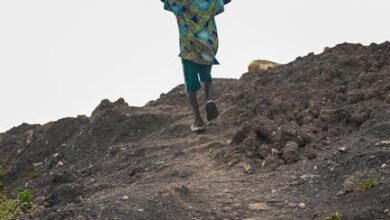How long are Ousmane Dembele and Desire Doue out for? PSG ‘furious’ with double injury blow.

How long are Ousmane Dembele and Desire Doue out for? PSG ‘furious’ with double injury blow.
Estimated reading time: 8 minutes
- Paris Saint-Germain is deeply frustrated by significant injuries sustained by Ousmane Dembele (hamstring, 4-6 weeks out) and Desire Doue (muscle issue, 3-5 weeks out) while on international duty with the French national team.
- PSG’s anger has escalated to sending a formal letter to France bosses, highlighting a serious club-country dispute over player welfare and management protocols.
- Dembele’s absence significantly impacts PSG’s attacking prowess and creativity, particularly in crucial Ligue 1 and Champions League matches, while Doue’s injury halts his promising development and squad integration.
- Manager Luis Enrique must now adapt tactical plans and rely heavily on existing squad depth, potentially offering opportunities for other players to step up during this challenging period.
- The incident underscores the ongoing need for clearer communication, standardized fitness reporting, and improved player management protocols between clubs and national associations to prevent recurring injury crises.
- The Dembele Dilemma: Assessing Ousmane’s Injury & Recovery Timeline
- Desire Doue’s Setback: A Young Talent Sidelined
- PSG’s Fury: The Controversy Behind the Double Blow
- Navigating the Injury Crisis: What’s Next for PSG?
- Conclusion
- FAQ Section
The international break often brings a mix of excitement and apprehension for football clubs. For Paris Saint-Germain, the latest round of national team fixtures has delivered a devastating blow, leaving the Parc des Princes outfit reeling from the injuries sustained by key forward Ousmane Dembele and rising star Desire Doue.
These dual setbacks have not only disrupted PSG’s meticulously planned season but have also ignited a fiery dispute between the French champions and the national football hierarchy. The club’s palpable frustration underscores a deeper tension between club interests and international commitments, threatening to overshadow a crucial period in their domestic and European campaigns.
Fans, analysts, and fantasy managers alike are now scrambling for answers: what are the prognoses for Dembele and Doue? How long will they be sidelined? And just how “furious” is PSG, and what does this mean for the future of player management?
The Dembele Dilemma: Assessing Ousmane’s Injury & Recovery Timeline
Ousmane Dembele, a player whose talent is undeniable but whose career has often been punctuated by injury woes, once again finds himself on the treatment table. The dynamic winger, a pivotal figure in Luis Enrique’s tactical setup, reportedly sustained a hamstring injury while on international duty with the French national team. This type of injury, particularly in a player known for explosive acceleration and sharp changes of direction, is always a concern.
Initial reports suggest Dembele could be out for anywhere from four to six weeks, depending on the grade of the hamstring strain. A Grade 1 strain might see him return sooner, while a Grade 2 could push his recovery closer to the six-week mark or even slightly beyond. A Grade 3, a complete tear, would be significantly longer, but current indications lean towards a less severe outcome.
This timeline means Dembele will undoubtedly miss several crucial Ligue 1 fixtures and, more critically, key matches in the UEFA Champions League group stage. His absence deprives PSG of a potent attacking threat, a creator of chances, and a player capable of stretching opposition defences with his pace and dribbling ability. For a club with aspirations of European glory, losing such a player at this juncture is a bitter pill to swallow.
His history of injuries, particularly to his hamstrings and other muscle groups, will undoubtedly factor into his rehabilitation. PSG’s medical staff will prioritize not just a swift return, but a sustainable one, aiming to prevent recurrence given Dembele’s susceptibility.
Desire Doue’s Setback: A Young Talent Sidelined
While Dembele’s injury commands headlines due to his stature, the injury to Desire Doue represents a significant blow to PSG’s squad depth and an unfortunate interruption to a promising young career. Doue, an exciting midfielder with an impressive range of skills, was featuring prominently for France’s U21 side when he picked up his own injury. Details surrounding Doue’s specific injury are slightly less publicized but reports indicate it’s a muscle issue, possibly a quadriceps strain.
For a burgeoning talent like Doue, consistent game time and an uninterrupted development pathway are crucial. This injury, estimated to keep him out for three to five weeks, halts his momentum just as he was beginning to integrate more deeply into PSG’s senior setup and impress Luis Enrique. His versatility and energy in midfield offer a different dynamic, and his absence will be felt in the squad’s rotation options, particularly during congested fixture periods.
The estimated recovery time, while potentially shorter than Dembele’s, still means a significant period away from first-team action. This is particularly frustrating for Doue, who will be eager to stake his claim for a regular spot. For PSG, it means relying even more heavily on their established midfield options and potentially fast-tracking other academy talents.
PSG’s Fury: The Controversy Behind the Double Blow
The double injury blow has sparked a fierce reaction from PSG, moving beyond mere disappointment to outright anger. The club’s frustration stems from what they perceive as inadequate player management or excessive demands placed on their athletes during the international window. This isn’t just a casual grievance; it’s a formal protest.
In a strong testament to their outrage, PSG have sent a letter to France bosses over the injuries. This unprecedented step highlights the severity of their displeasure and the perceived negligence or lack of communication from the French national team setup. Such a letter typically outlines concerns regarding training loads, medical protocols, player monitoring, and the overall management of their players while on international duty.
The club-country dispute is a perennial issue in modern football, but rarely does it escalate to this level of formal complaint. PSG’s stance is clear: they invest heavily in their players, and their welfare should be paramount, regardless of national team commitments. The argument often revolves around the intensity of training sessions, the number of minutes played, travel demands, and the differing medical approaches between club and national setups.
For Luis Enrique and the PSG hierarchy, losing two key players – one a seasoned international and the other a future prospect – in one international break is unacceptable. It disrupts tactical plans, forces difficult selections, and puts unnecessary strain on an already demanding schedule. The implications extend beyond immediate results, potentially affecting the club’s long-term strategy and player welfare policies.
Navigating the Injury Crisis: What’s Next for PSG?
With Dembele and Doue sidelined, PSG faces a significant challenge. Luis Enrique will need to delve deep into his squad, making tactical adjustments and relying on other players to step up. In Dembele’s absence, options like Bradley Barcola, Gonçalo Ramos playing wider, or even shifting to a different formation become possibilities. The pressure will be on players like Kylian Mbappé to carry an even greater creative and goalscoring burden.
Doue’s injury, while less high-profile, also impacts the midfield. Vitinha, Manuel Ugarte, and Warren Zaïre-Emery will need to maintain high performance levels, and perhaps more minutes will be offered to other young talents from the academy. This situation, though unwelcome, can sometimes be an opportunity for lesser-known players to make their mark.
Beyond the immediate team selections, PSG’s medical and fitness staff will be working overtime. Their focus will be on the meticulous rehabilitation of Dembele and Doue, ensuring their return to full fitness is both timely and sustainable. Preventing further injuries within the squad will also be a top priority, as the season progresses through its most congested periods.
Actionable Steps in the Wake of Injury
This scenario offers lessons and considerations for various stakeholders:
- For Football Fans & Pundits: Keep a close eye on official club statements and reputable sports news outlets for definitive updates on recovery timelines. Injury prognoses can sometimes be fluid, and early estimates are subject to change based on the player’s individual rehabilitation progress. Don’t rely solely on social media rumors.
- For Fantasy Football Managers: Immediately review your squad. If Dembele or Doue were in your team, act quickly to find suitable replacements. Consider players from PSG who might see increased game time (e.g., Barcola, or a deeper-lying midfielder for Doue’s spot) or look to other clubs for reliable alternatives. Monitor their price changes closely.
- For Clubs & National Associations: This incident serves as a stark reminder for a comprehensive review of player management protocols during international breaks. Establish clearer communication channels, agree on standardized fitness reporting, and potentially limit training intensity or match minutes for players who have heavy club schedules or a history of injuries. Prioritizing player welfare benefits all parties in the long run.
Real-World Example: A Recurring Battle
The tension between clubs and national teams over player injuries is not new. A prime example is the recurring dispute between Real Madrid and the Spanish national team regarding Sergio Ramos during his playing days. Madrid often expressed concern over the workload placed on their captain, particularly when he was carrying minor niggles, arguing that the national team sometimes pushed players too hard, leading to exacerbated injuries upon their return to the club. Similarly, Liverpool has frequently vocalized concerns over the treatment of their players, notably Mohamed Salah and Sadio Mané, during African Cup of Nations breaks or other international windows, highlighting the differing medical approaches and recovery expectations.
Conclusion
The injuries to Ousmane Dembele and Desire Doue represent a significant blow to PSG’s ambitions this season. While the exact recovery timelines remain somewhat fluid, both players are set for an extended period on the sidelines, forcing Luis Enrique to adapt and innovate. More profoundly, PSG’s “furious” reaction, underscored by their formal letter to the French football authorities, casts a harsh light on the ongoing battle between club and country.
This double injury crisis is a critical test for PSG’s squad depth, tactical flexibility, and their ability to navigate adversity. It also reignites a crucial conversation about player welfare and the need for greater collaboration and understanding between the various stakeholders in modern football.
FAQ Section
How long are Ousmane Dembele and Desire Doue expected to be out?
Ousmane Dembele is estimated to be out for four to six weeks due to a hamstring injury. Desire Doue is expected to be sidelined for three to five weeks with a muscle issue, possibly a quadriceps strain.
Why is PSG “furious” about these injuries?
PSG’s fury stems from what they perceive as inadequate player management or excessive demands placed on their athletes while on international duty. They have formally protested by sending a letter to France bosses, arguing that player welfare was not prioritized, leading to significant disruption for the club.
What impact will these injuries have on PSG’s season?
Dembele’s absence will significantly weaken PSG’s attacking threat, particularly in crucial Ligue 1 and Champions League matches. Doue’s injury impacts squad depth and halts his development. Manager Luis Enrique will need to adapt tactics, rely on other players like Bradley Barcola, and potentially put more pressure on stars like Kylian Mbappé.
What are your thoughts on PSG’s strong reaction to the injuries?
PSG’s strong reaction, including sending a formal letter, highlights the ongoing tension between club and country interests in football. Many believe clubs have a right to protect their investments in players, while others argue players have a duty to represent their national teams. This incident underscores the need for better communication and standardized protocols to manage player welfare effectively.
What are some actionable steps for clubs and national associations to prevent such disputes?
Clubs and national associations should establish clearer communication channels, agree on standardized fitness reporting, and potentially limit training intensity or match minutes for players with heavy club schedules or a history of injuries. Prioritizing player welfare through collaborative approaches can benefit all parties in the long run.





